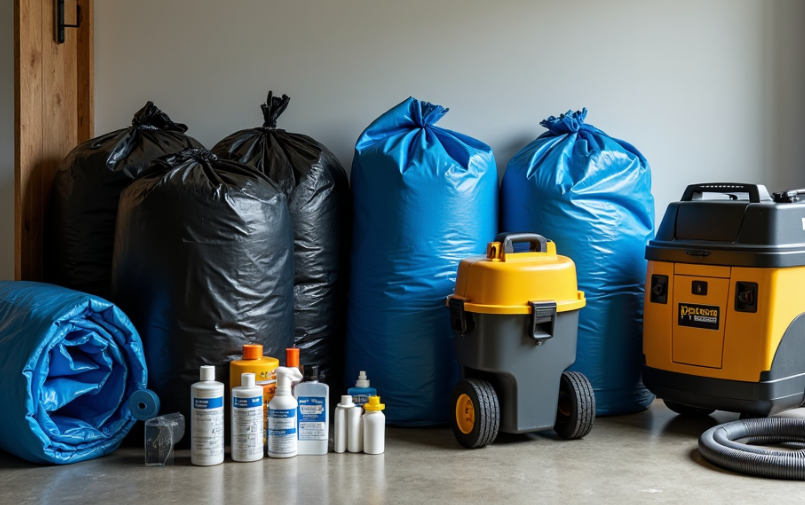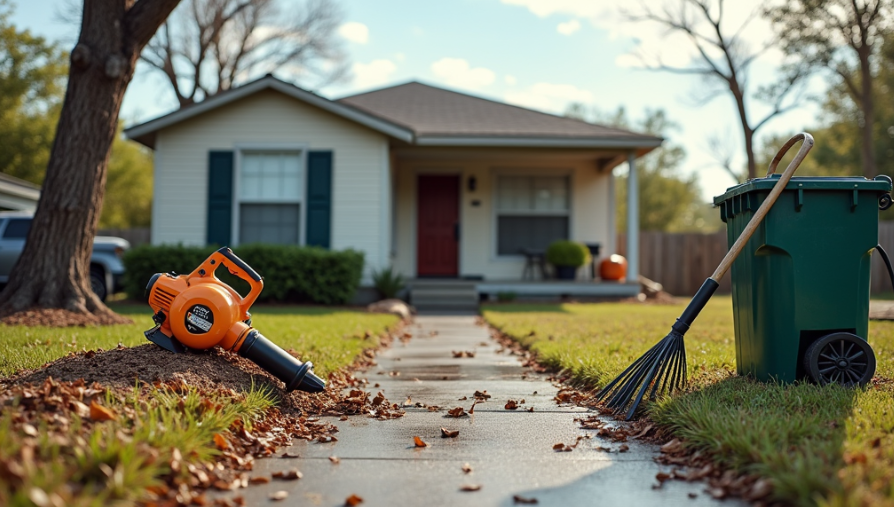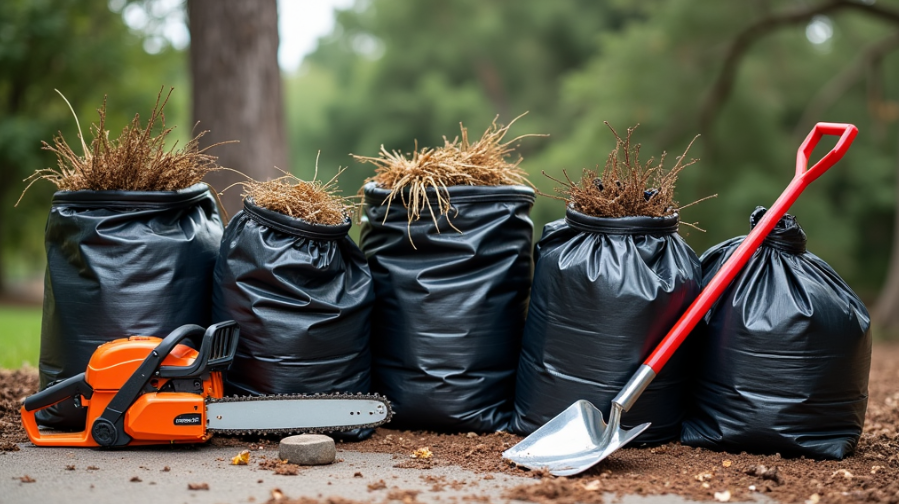When it comes to effective equipment for hurricane cleanup, having the right tools can significantly impact the restoration of safety and order following a storm. Essential equipment not only assists in clearing debris but also plays a crucial role in managing flooding and protecting properties from additional damage. After a hurricane, communities are often overwhelmed by chaos, but with proper preparation and the right tools, the recovery process can be more efficient and less stressful. In this comprehensive guide, we will delve into must-have equipment that can facilitate effective cleanup, offering practical insights, expert recommendations, and tips to support you through this challenging time. Whether you’re a homeowner or part of a community recovery team, understanding these tools will empower you to take proactive steps toward rebuilding. Let’s embark on your journey to recovery together!
Essential Equipment for Hurricane Cleanup

Cleaning up after a hurricane can be a challenging and daunting task, but having the right equipment is crucial for ensuring the job is both easier and safer. Proper tools can help minimize risks, enhance efficiency, and speed up recovery efforts. This guide outlines essential tools and supplies you’ll need, such as sturdy gloves, masks, tarps for debris collection, generators for power restoration, and specialized equipment like chainsaws for tree removal. Being prepared with the right gear can significantly impact your cleanup efforts and ensure a safer environment during this critical time.
Power Tools for Debris Removal
- Chainsaws: After a storm, you might find fallen trees blocking your way. A chainsaw is vital for cutting these down. Remember to wear protective gear and follow safety rules when using one. Regular maintenance, like checking the chain and filling it with oil, will help keep it working well.
- Generators: When the power goes out, a generator can be a lifesaver. It provides electricity for tools and lights. Be sure to manage fuel properly and use it outside to avoid dangerous fumes.
- Pneumatic Tools: For heavy-duty tasks like removing broken structures, pneumatic tools can be really helpful. These include air compressors and impact drivers, making tough jobs easier and faster.
Manual Tools for Ground-Level Work
- Shovels and Rakes: These basic tools are essential for moving dirt and debris. An ergonomic shovel can help reduce strain on your back, so you can work longer without pain.
- Wheelbarrows: A wheelbarrow makes it easy to transport heavy debris. Look for lightweight options to help you move materials without hurting yourself.
Safety Gear for Protecting Yourself
- Personal Protective Equipment (PPE): Working in a hurricane’s aftermath can be risky. Gear up with gloves, safety goggles, and dust masks to protect yourself from sharp objects and dust.
- High-Visibility Vests and Hard Hats: When there’s heavy machinery around, wear a high-visibility vest and a hard hat to stay safe. You can find affordable options at local stores or online.
- First Aid Kits: Accidents can happen, so having a first aid kit is a must. Make sure it includes band-aids, antiseptic wipes, and other essentials.
Cleanup Supplies for Restoration
- Heavy-Duty Trash Bags and Containers: Collecting debris is easier with heavy-duty trash bags. Proper disposal methods are important, especially for hazardous waste.
- Tarps: Tarps are great for covering damage and keeping belongings safe from rain. Secure them tightly in windy conditions to prevent them from blowing away.
- Industrial Vacuums and Water Pumps: If you’re dealing with flooded areas, industrial vacuums and water pumps help remove water quickly. Many communities have rental options to help you access these tools without buying them.
Community Resources for Efficient Recovery
- Local Equipment Rental Services: Look for nearby equipment rental services to find tools you might need for cleanup. This can save you money and time.
- Volunteer Networks and Community Support: Getting involved in community cleanup efforts can make a big difference. Join local groups to help each other recover and restore the area.
When facing hurricane cleanup, having the right equipment is essential for efficiency and safety. Tools like chainsaws, debris removal trucks, and protective gear can help manage the challenging conditions. Collaborating with a team enhances the process, allowing tasks to be divided and completed more swiftly. Always prioritize safety by following guidelines and maintaining communication.
Moving Forward: Best Practices for Future Preparedness

When preparing for the impact of a hurricane, understanding best practices for cleanup and recovery can significantly affect your safety and well-being. Effective preparation involves creating an emergency plan, assembling a disaster supply kit, and securing your property. After the storm, it’s crucial to assess damage safely, document it for insurance purposes, and initiate cleanup promptly to prevent further issues like mold. Additionally, stay informed through local authorities and utilize community resources for recovery assistance. By taking these proactive steps, you can enhance your resilience when disaster strikes.
Create an Emergency Plan That Includes Necessary Equipment and Supplies
First things first: make an emergency plan. This plan should outline how your family will stay safe during a storm. Think about what equipment you’ll need. Common items include first aid kits, flashlights, batteries, and emergency supplies. It’s also wise to have heavy-duty trash bags and cleanup supplies ready. When the storm passes, debris removal becomes priority number one. Having basic cleanup equipment, such as shovels, rakes, and wheelbarrows, can help clear your property quickly.
Consider renting specialized cleanup equipment like industrial vacuums or water pumps to manage flooding. If you live in an area prone to severe storms, keep a generator handy to ensure power when the grid goes down. These tools can help you get back on your feet faster after the chaos of a hurricane.
Regularly Review and Update Your Hurricane Preparedness Kit
Your hurricane preparedness kit isn’t a one-time setup; it needs regular check-ups! Every few months, go through your kit and ensure everything is in good shape. Check that your safety gear, like safety goggles, dust masks, and heavy-duty gloves, are ready to use.
Don’t forget about protective equipment! Items like safety vests and gloves are crucial for staying safe during cleanup. You might also want to include chainsaws or cutting tools for heavy debris. Ensure that any power tools are charged and functioning properly. If you have an emergency response plan, make sure everyone in your household knows their roles and responsibilities. Teamwork makes cleanup smoother!
Engage with Local Response Teams and Community Leaders to Establish Effective Recovery Networks
Lastly, don’t underestimate the power of community. Connect with local response teams and community leaders before a hurricane hits. Being part of a community support network can provide additional resources, like rescue equipment and cleaning solutions. Local groups can also help with disaster recovery efforts, ensuring that everyone pitches in.
Think about organizing a neighborhood cleanup after a storm. This collective effort can save time and resources while building stronger community ties. Plus, it’s always easier to tackle storm cleanup with friends and neighbors by your side.
In summary, being prepared for hurricane cleanup involves planning, regular equipment checks, and community involvement. By following these practices, you can ensure you and your loved ones are ready to face the storm and recover afterward. Stay safe!
Wrapping Up Your Hurricane Cleanup Journey
As we navigate the chaos following a hurricane, having the right equipment is vital for a swift and safe recovery. From generators to safety gear, each tool plays its part in restoring our communities and homes. I encourage you to be proactive—review your hurricane preparedness kit, and don’t hesitate to reach out to local resources for support. If you’re ready to tackle your next project, explore our wide range of top-brand construction tools and equipment at Rentalex. Visit our Tampa location or call us at (813) 971-9990 for more information. Let’s rebuild together!






